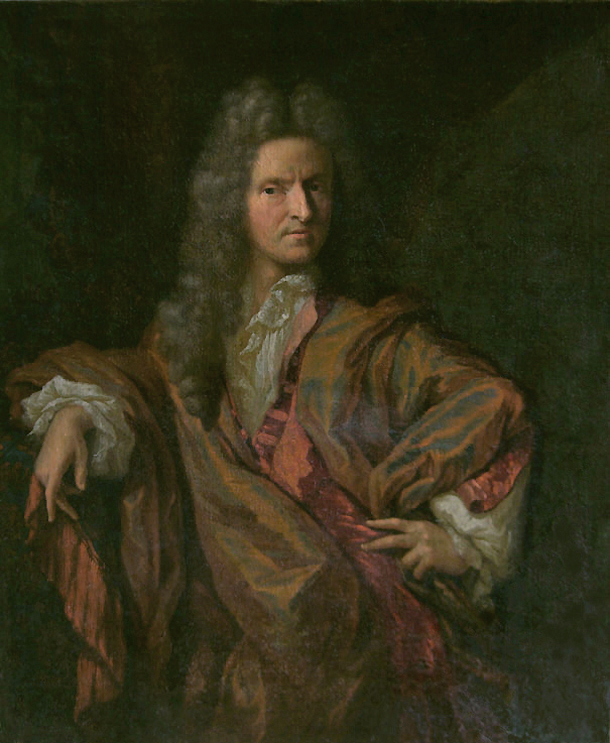|
Provenance:
Private collection, Maidenhead (England)
Condition report:
The support, a twill canvas that has been primed with a brown ground, is
currently undergoing restoration.
As usual, removal of the varnish will enhance colours and reveal details but due to the dark ground and the ageing it will be difficult to restore the illusion of depth. Quite a few changes in the drapery,
dominating the composition and falling in luminous folds, are visible with infrared reflectography.
Notes (by Benjamin Charron):
Abraham Bisschop was first trained by his father Cornelius Bisschop in Dordrecht in the South Holland.
Most of his works are dedicated to exotic birds, usually in landscapes with classical ruins, but he also composed some still lifes and
rare portraits.
In 1715, he was registered at the Guild of Middelburg, but not much is known about his life.
In this accomplished portrait, Abraham Bisschop presents a
nobleman in a brown cloak wrapped around both shoulders with an almost defiant gaze and jaunty demeanour. He is posed nonchalantly with one arm akimbo and wears an elegant informal garment fastens under the chest revealing his shirt underneath in a fashionably negligent manner.
Abraham Bisschop delights in depicting a wide range of textures, despite a less finished style, with rich folds of clothes and subtlest gradations of brown and red to convey the surface of satin.
The painting’s colour scheme is marked by an elegant austerity with nuances of warm pink for the skin of the face and grey for the powdered wig.
This nobleman looks detached, almost distant, but also very posed especially with
the second hand gesture.
At that time, to be mannered was a suitable social behaviour for
the aristocracy. It was understood to be a performance, something artificial,
and that who you really are was not something on display.
Usually, a portrait presents the physical appearance but also psychological.
Despite our research, we could not identify the sitter. Here, he is presenting himself
to be seen in a particular way and we are not going to know who
the real person underneath is. In this
portrait, the way this nobleman is looking at us, is almost a dare, the dare to understand who he
is.
The elegance of the image, both in terms of the way that it's
painted and in terms of how this young man presents himself to
the things that really stand out, so actually maybe we should
start by saying, in general, what some trademarks of mannerisms
are and how this relates to it. He's presenting himself to be
seen in a particular way and we're never going to know who the
real person underneath is. So, again, a kind of virtuosic
painting, but also very good demonstration of how you were
supposed to behave in upper class society.
Sold
|
